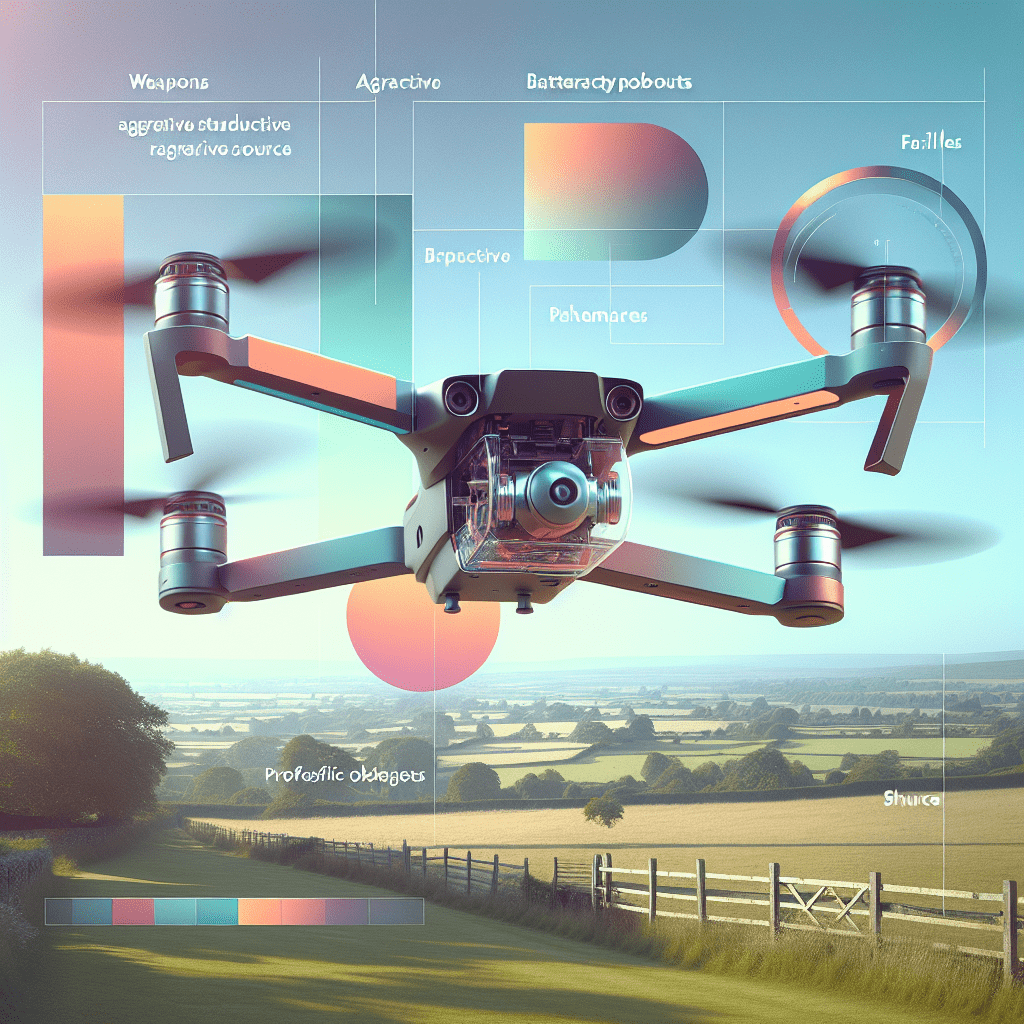Aero3 Lite Battery: Maximise Flight Time and Safety
In This Article
- Use only manufacturer-approved Aero3 Lite batteries for optimal compatibility.
- Choose between Li-ion and LiPo based on your flight needs and operating habits.
- Consider high-capacity batteries to significantly increase air time.
- Always swap batteries carefully and safely in the field to avoid malfunctions.
- Store batteries at 50–60% charge in a cool, dry place for maximum lifespan.
- Look out for signs of wear—swelling, long charge times, and decreased voltage.
- Aftermarket batteries may jeopardise your drone and void your warranty.
- In UK climates, keep batteries warm in winter and shaded in summer.
- Rotating multiple batteries helps distribute usage and prolong unit life.
- Track battery health digitally and replace when performance steadily declines.
Why Battery Choice Matters for Your Aero3 Lite
Flight Time Impact and Efficiency
When striving for optimal drone performance, the Aero3 Lite battery becomes a pivotal component. Your choice of battery directly affects several operational factors such as flight duration, propulsion efficiency, and payload handling. The Aero3 Lite battery is designed with versatility in mind, but selecting the correct specification ensures you get the most from your equipment. Whether you’re recording high-resolution images or surveying vast areas, managing power intelligently is fundamental to mission success. Moreover, a poor battery choice doesn’t just cut short your flight—it increases wear on the motors and shortens the overall lifespan of your Aero3 Lite’s electrical system. Understanding what makes a battery right for your drone can dramatically alter the way you plan and execute your aerial projects.

Understanding Battery Types Compatible with Aero3 Lite
LiPo vs Li-ion: Which Works Best?
Lithium Polymer (LiPo) and Lithium-Ion (Li-ion) batteries are the two dominant technologies for drones like the Aero3 Lite. Understanding the difference is essential for making an informed purchase. LiPo batteries offer a higher discharge rate, which provides better thrust and immediate power delivery. This makes them ideal for high-performance flights or quick manoeuvres. They are, however, more sensitive to environmental factors and require vigilant maintenance. On the other hand, Li-ion batteries boast higher energy density, meaning longer flight times, especially in steady-level flying applications. They are more robust, especially during storage and charging cycles, but tend to weigh slightly more. Selecting between the two should align with your flight goals. If you’re shooting action footage requiring agility, LiPo might be preferable. For mapping large areas or surveys, Li-ion offers enduring performance. And regardless of type, only use batteries explicitly certified for Aero3 Lite to avoid voiding warranties or damaging the drone.
High-Capacity Battery Options for Extended Flights
The quest for longer aerial operation often leads pilots to explore high-capacity versions of the Aero3 Lite battery. These options go beyond the standard 3000mAh packs and reach capacities of 4000mAh or even 5000mAh, vastly extending airtime. Such batteries enable up to 30% more air-time, allowing more comprehensive surveys, prolonged filming sessions, or even multi-point inspections without a mid-mission battery swap. However, it’s worth noting that an increase in capacity usually results in added weight, potentially affecting aerodynamic efficiency. Therefore, one must always strike a balance between capacity and operational weight limits. Additionally, your drone’s software may need firmware updates to fully recognise and manage larger battery inputs. Investing in a high-capacity Aero3 Lite battery provides more flexibility in the field, especially for commercial drone operators who need to maximise data collection within limited time windows.
Tips for Safely Swapping Batteries in the Field
Field operations often demand quick turnaround times, which makes battery swapping an essential skill. But swapping batteries on-site isn’t just about speed—it’s about safety and operational integrity. Always power down the Aero3 Lite completely before disconnecting the battery. Use gloves if the drone has been operating under high-performance conditions, as residual heat can cause discomfort or injury. Carefully inspect the replacement battery for swelling, punctures, or corrosive leaks. Insert it slowly, ensuring that all connectors click securely into place without force. Never store batteries directly on the ground, particularly on wet or conductive surfaces. Instead, use a battery-safe landing pad or case. For best practices, mark each battery with a flight count to monitor usage and life expectancy. With proper handling, you reduce the risk of electrical short, ensure calibration accuracy, and increase both safety and system longevity.
How to Store and Maintain Aero3 Lite Batteries
Proper storage and maintenance are critical to prolonging the life of your Aero3 Lite battery. Batteries degrade faster when exposed to extreme temperatures, humidity, or continuous charge cycles. Always store batteries in a cool, dry space between 18°C and 25°C. Use fireproof LiPo bags for added safety and never store batteries at 100% or 0% charge for prolonged periods. The ideal storage charge is around 50–60%. It’s advisable to perform a full charge-discharge cycle every three months if the battery isn’t in regular use. Clean terminals with dry microfibre cloths to prevent corroded contacts and use a dedicated battery tester to monitor cell health. Implement a digital log to track charging cycles and performance. Investing in a smart charger compatible with Aero3 Lite battery specifications ensures you avoid overcharging—one of the most common causes of drone battery failure. Learn more about Maximising Drone Flight Time and Battery Upgrades
Recognising Signs Your Battery Needs Replacement
Spotting degradation early can prevent catastrophic in-flight failures. Warning signs that your Aero3 Lite battery needs replacing include visible swelling or bloating, inconsistent performance, extended charging times, and unexplained voltage drops between cells. If the battery no longer holds its standard charge capacity or if your drone reports frequent low battery alerts during flight, it’s time for immediate action. Listen to how the drone sounds mid-flight—sudden RPM drops may indicate voltage sag. Also, if the battery gets unusually hot after moderate use, it’s a red flag. Dispose of damaged batteries responsibly through certified e-waste centres and never attempt to service a compromised unit yourself. Regularly examining battery health using a diagnostic tool is a proactive method of staying ahead of potentially hazardous situations. Read a related article
Are Aftermarket Batteries Worth the Risk?
While aftermarket batteries for the Aero3 Lite may seem like a cost-effective alternative, they often present more risks than rewards. Many third-party batteries lack the full compatibility required for seamless operation. Inconsistencies in firmware compatibility, cell balancing, and energy delivery can lead to erratic performance or flight anomalies. Furthermore, low-grade cells can become unstable, especially under demanding conditions like wind resistance or high payloads. Manufacturer-approved Aero3 Lite batteries are tested rigorously for performance, safety, and endurance. Going for unauthorised alternatives may void your drone’s warranty and introduce safety concerns, particularly in populated or regulated airspace. Unless the alternative is from a verified, certified partner, the trade-off is simply not worth the risk. Always prioritise long-term reliability over short-term savings. Independent review of lightweight battery products
Experts Compare Top-Rated Batteries for Aero3 Lite
Among expert drone enthusiasts and commercial pilots, a few Aero3 Lite battery models consistently receive top marks. The AeroPro Max 4000mAh model is popular for its exceptional thermal management and 28-minute average flight duration. Meanwhile, the SkyVault Li-ion 4500mAh battery offers a truly premium experience, delivering solid efficiency with minimal voltage drop even in colder conditions. Another favourite is the AeroCore 3750mAh Smart Battery, which comes with built-in telemetry integration and a mobile diagnostics interface for real-time health monitoring. Independent lab tests and pilot reviews confirm these models exceed performance benchmarks when operated correctly. Real-world trials show subtle but impactful differences in recharge cycles, load consistency, and endurance—proving that the best Aero3 Lite battery isn’t just about capacity, but overall system harmony. Choosing from this elite tier offers peace of mind for both recreational and commercial operations.
Boosting Performance with Spare Packs & Load Reduction
Smart load management can make a significant difference in what your Aero3 Lite battery can achieve. Reducing onboard weight by streamlining camera gear, using lightweight mounts, or flying without non-essential accessories frees up energy for endurance. Additionally, carrying multiple fully charged spare batteries expands your operational timeframe substantially. Pilots often employ battery rotation strategies—alternating among spare packs to avoid overreliance on one battery, spreading wear evenly across multiple units. For long missions, packing a portable solar power station or high-capacity charging hub allows you to recharge in field conditions, greatly enhancing mission continuity. Data collection schedules can also be optimised around battery life, focusing high-energy tasks during the beginning of a flight when voltage is strongest. Implementing these tactics ensures you not only fly longer—but smarter as well.
UK Climate Tips for Maintaining Drone Battery Health
British weather presents several battery challenges, particularly given the Aero3 Lite’s sensitivity to ambient temperatures. Cold conditions below 10°C can cause a decrease in energy efficiency, increased voltage sag, and slower charge rates. To combat this, pre-warm batteries using protective sleeves or carry them close to your body when transporting to your flight site. Once installed, allow the drone to idle for one or two minutes before lift-off to naturally warm the power cells. During summer, battery care requires prevention of overheating: never leave batteries in a hot car or in direct sunlight. Moisture is another concern—use sealed cases to prevent condensation ingress during rainy conditions. Regular battery logs, paired with physical inspections, can help UK drone operators create seasonally adaptive maintenance routines, extending battery life irrespective of unpredictable British weather.
“Selecting the right Aero3 Lite battery is the smartest investment a drone pilot can make. It determines not just flight time, but also the safety, efficiency, and reliability of every mission.”
Your Next Flight: Putting Battery Smarts into Action
Integrating battery expertise into your Aero3 Lite operations accelerates your capabilities as both a pilot and planner. Begin by standardising your power checklist—inspect, install, and verify voltage prior to flight. Select batteries specifically aligned with your mission type and expected environmental conditions. Invest in high-quality, high-capacity packs where applicable, and always prioritise hardware approved for your specific model. Use marked storage cases to rotate batteries in sequence, preventing excessive wear on any one unit. Monitor field performance and keep logs to identify issues before they escalate. Regardless of your mission—be it aerial photography, agriculture mapping, or infrastructure inspection—proactive battery management translates directly into operational success. Your Aero3 Lite battery is not merely a power source; it is the heartbeat of your aerial ambitions.
Great guide on aero3-lite-battery-selection-longer-flights – Community Feedback
How can I increase my Aero3 Lite’s flight time?
Upgrade to high-capacity batteries, carry spares, and follow battery care best practices. Reduce payload and fly in suitable conditions to maximise every session.
Are all Aero3 Lite batteries interchangeable?
Only use batteries specified for the Aero3 Lite to ensure safety and optimal fit. Avoid unverified third-party batteries to protect your drone and maintain warranty.
What are the signs a drone battery needs replacing?
Shorter flight times, batteries not holding charge, swelling, or unusual heat during use all indicate it’s time to replace your Aero3 Lite battery pack.

